September 11, 2014
Geothermal Power: Japan Has World's Third Largest Geothermal Reserves, 60 Percent of Which Can Be Developed
Keywords: Environmental Technology Renewable Energy
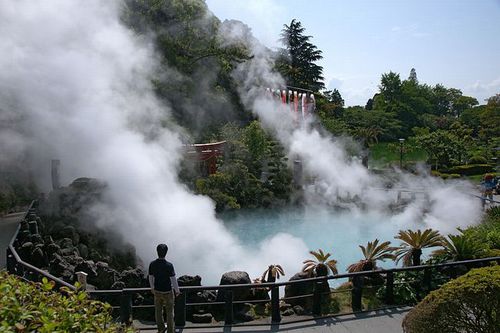
Image by 663highland Some Rights Reserved.
Japan has abundant reserves of geothermal energy, a stable source of electricity with a high utilization factor on par with thermal power. Below we share a report about the present status of geothermal use in Japan, including installation potentials and future prospects for expansion.
Editor's Note: This article is reproduced in edited form with permission from Smart Japan. Smart Japan is an online media services provider specializing in energy conservation, storage, and generation.
The U.S., Indonesia, and Japan stand out among the world's largest holders of geothermal reserves. The installed geothermal capacity in Japan remains less than half that of the other two countries, so the room for development is significantly large. The cost of geothermal power generation is around 10 yen (about 10 cents U.S.) per kilowatt-hour, as low as that of gas-fired power. The relaxation of regulations on Japan's national parks, where geothermal resources are concentrated, has been accelerating.
Japan has many active volcanoes within its narrow national territory and thus has plenty of geothermal resources underground. These resources could amount to as many as 23,470,000 kW in electricity, equivalent to the energy consumed by 40 million ordinary households. Yet only two percent of it is actually used for power generation (Figure 1).
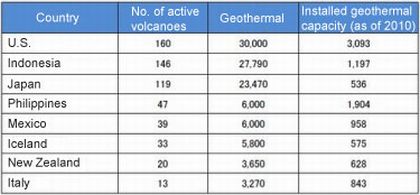
Figure 1. Geothermal Resources of Major Countries
Source: New Energy and Industrial Technology Development (NEDO)
(prepared based on data from the National Institute of
Advanced Industrial Science and Technology and other organizations)
The principal factor responsible for the slow development of geothermal resources in Japan is that most areas with active volcanoes have been designated as national parks, where development is severely restricted. However, the relaxation of regulations on natural parks by the Ministry of the Environment in March 2012 and the start of a national feed-in tariff scheme in July of the same year triggered geothermal exploration projects across Japan (Figure 2).
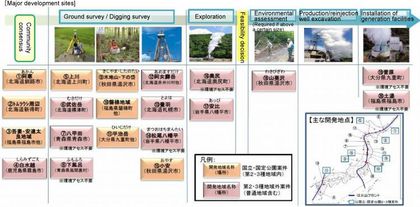
Figure 2. Progress of Major Geothermal Power Generation Projects
(as of January 10, 2014; click the chart for a larger image)
Source: Japanese Agency for Natural Resources and Energy
The advantage of geothermal power lies in its utilization factor, which is about 70 percent, almost as high as thermal power. And since it generates electricity consistently throughout the year, its power generation cost is the lowest among renewable energies, and almost as same as thermal power with liquefied natural gas (LNG). (Figure 3) The Japanese government has also recognized geothermal as a base-load power source and allocated a large budget to facilitate development projects.
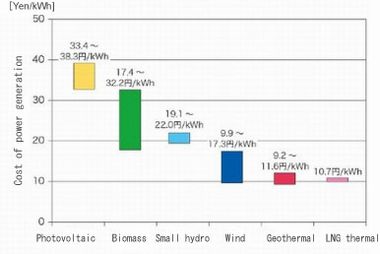
Figure 3. Comparison of power generation cost
between renewable sources and LNG thermal
Source: NEDO (prepared based on data from the Costs Validation Committee)
New geothermal power generation resources is low-temperature water at 120 Celsius or lower
About a quarter of the geothermal resources in Japan--or about six million kW's worth--exists in areas where development has traditionally been allowed. The annual output from these resources could meet the needs of as many as ten million households. With increased deregulation, it is estimated that this potential could double or more. (Figure 4)
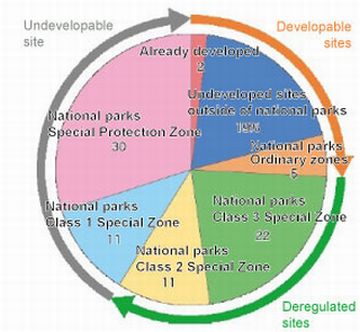
Figure 4. Potential Geothermal Resource Development Sites
Source: NEDO (prepared based on data from
the Agency for Natural Resources and Energy)
Also noteworthy is a new technology called binary cycle generation. While conventional geothermal energy generation requires hot water above 150 degrees Celsius, binary cycle method can generate power using lower temperature water, significantly expanding the potential of geothermal resources.
In particular, cooler water between 53 and 120 degrees offers substantial potential. The Ministry of the Environment estimates that hot water in this temperature range alone has the generation potential of 7.5 million kW, exceeding even the potential of hot water over 150 degrees. (Figure 5)
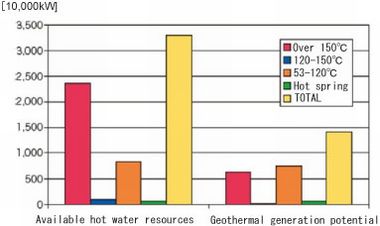
Figure 5. Available Geothermal Resources and Their Generation Potential
Source: NEDO (prepared based on data from Ministry of the Environment)
Binary cycle generation plants are compact in size and take only about a year to build. And the 53 - 120-degree hot water is widely distributed throughout the country, especially in mountainous areas in East Japan and Hokkaido (Figure 6). With the feed-in tariff set at a high 40 yen (without tax) per kWh, we may well see geothermal power generation grow very quickly in Japan.
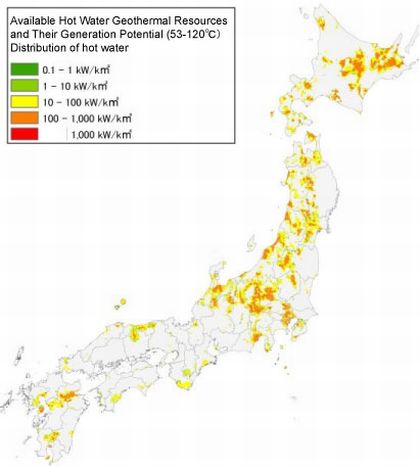
Figure 6. Distribution of hot water geothermal resources (53 - 120℃)
Source: Ministry of the Environment
Source: Smart Japan (in Japanese)
Related
"JFS Newsletter"
- 'Yumekaze' Wind Turbine Project Connects Metro Consumers and Regional Producers: Seikatsu Club Consumers' Co-operative
- Shaping Japan's Energy toward 2050 Participating in the Round Table for Studying Energy Situations
- Nishiawakura's Initiative for 100% Energy Self-Sufficiency, and a Municipal ICO Scheme
- Actions Toward 100% Renewable Energy in Japan
- Sustainable Community Building in Shimokawa: Recycling-Oriented Forest Management Enabling Permanent Use of Forest Resources
Related
"Popular Articles"
- Current Status of Renewable Energy in Japan (2015)
- Offshore Wind Farm Withstands Great East Japan Earthquake and Tsunami
- Current Status of Renewable Energy in Japan (2014)
- Geothermal Power: Japan Has World's Third Largest Geothermal Reserves, 60 Percent of Which Can Be Developed
- Tokyo Plans to Increase Renewable Energy Ratio to 20% by 2024


